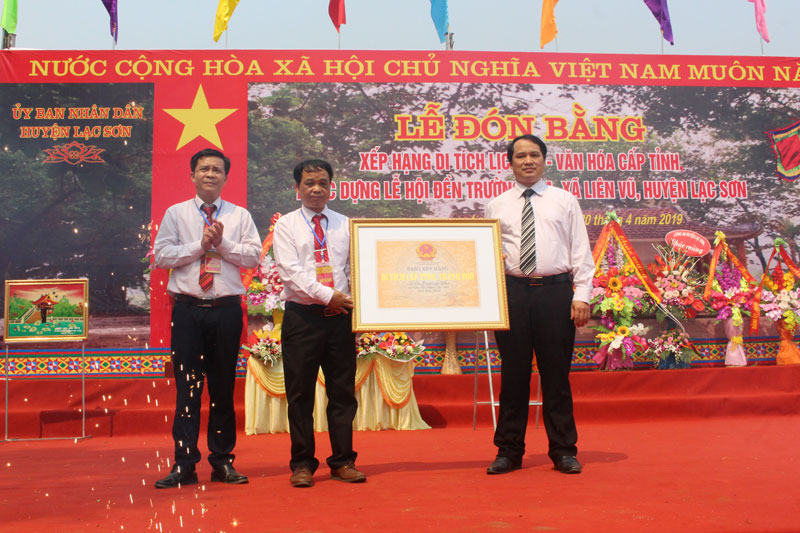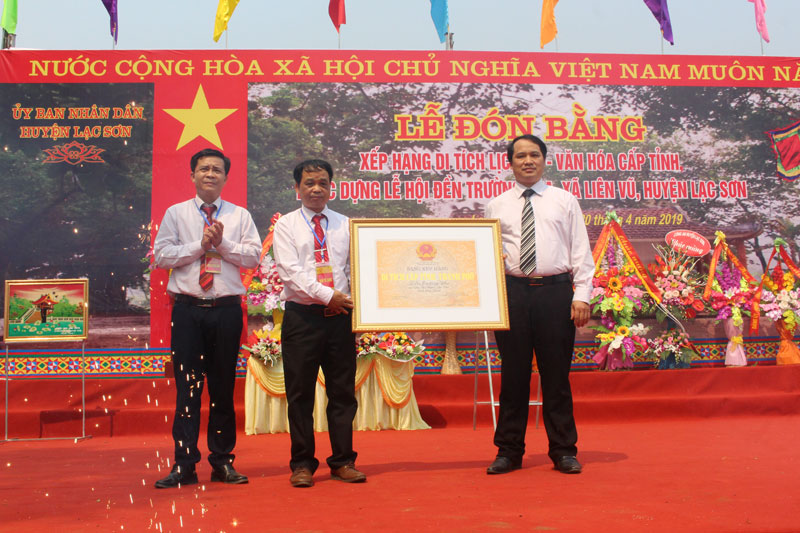
(HBO) - The People’s Committee of Lac Son district in the northern province of Hoa Binh has organised a ceremony to receive a certificate recognising Truong Kha temple in Lien Vu commune (Lac Son) as a provincial cultural, historical relic site.

The ceremony was
also to re-enact the Truong Kha temple festival.
The Truong Kha temple is located in Chieng
hamlet, Lien Vu commune. It was built in the 15th century and restored by
locals in 1997 with roof tiles, a wooden altar arranged with ceramic incense
bowls and some worshipping items.
In 2013, through capital sources mobilised among
individuals and organisations, people in the commune rebuilt the temple on the
foundation of the old one as a place of worshipping. Legend has it that the
Truong Kha temple worshipped three Kun Dol gods who protect rice crops and
cultivation of Muong people and they were worshipped by locals in the ancient Voi
Trao area as tutelary gods.
The Truong Kha temple festival is held annually
on the 15th and 16th day of the third lunar month. It is called bumper-crop praying
festival with rituals such as a procession of the three Kun Dol gods, shooting
white buffalos with Oong Thoong pipe, praying for rain and fishing. Besides,
people could participate in national sports, folk games and art exchanges.
With historical and cultural values, the Truong
Kha temple festival in Lien Vu commune (Lac Son) has been recognised as a
provincial cultural, historical relic site by the provincial People’s Committee
under Decision No.12/QD-UBND./.
The People’s Committee of Lac Son district held a ceremony on April 28 to receive the provincial relic certificate for the ancient rock carving site at Suoi Co stream, located in My Thanh commune.
A special music show titled "The country is in the fullness of joy” has been held at Hoa Binh Square in Hoa Binh city in celebration of the 50th anniversary of the liberation of the South and national reunification (April 30, 1975–2025).
The People's Committee of Lo Son commune, Tan Lac district, has organised the local annual traditional stream fishing festival on April 19 - 20.
As a land deeply intertwined with human history and Vietnam’s millennia-long journey of nation-building and defence, Hoa Binh is often revered for its epic tales and legends.
Residents of Hoa Binh boast a rich cultural identity, reflected in their unique language, traditional attire, customs, and folk melodies – described as "sweet as honey, clear as a mountain stream.”
Lac Son district’s Vu ban town held the 2025 Truong Kha temple festival on April 12–13 (the 15th–16th days of the third lunar month). Since its revival in 2019, the festival has been organised every three years, preserving valuable intangible heritage while meeting the community’s cultural and spiritual needs.



